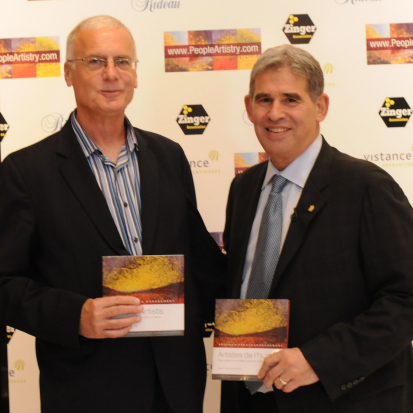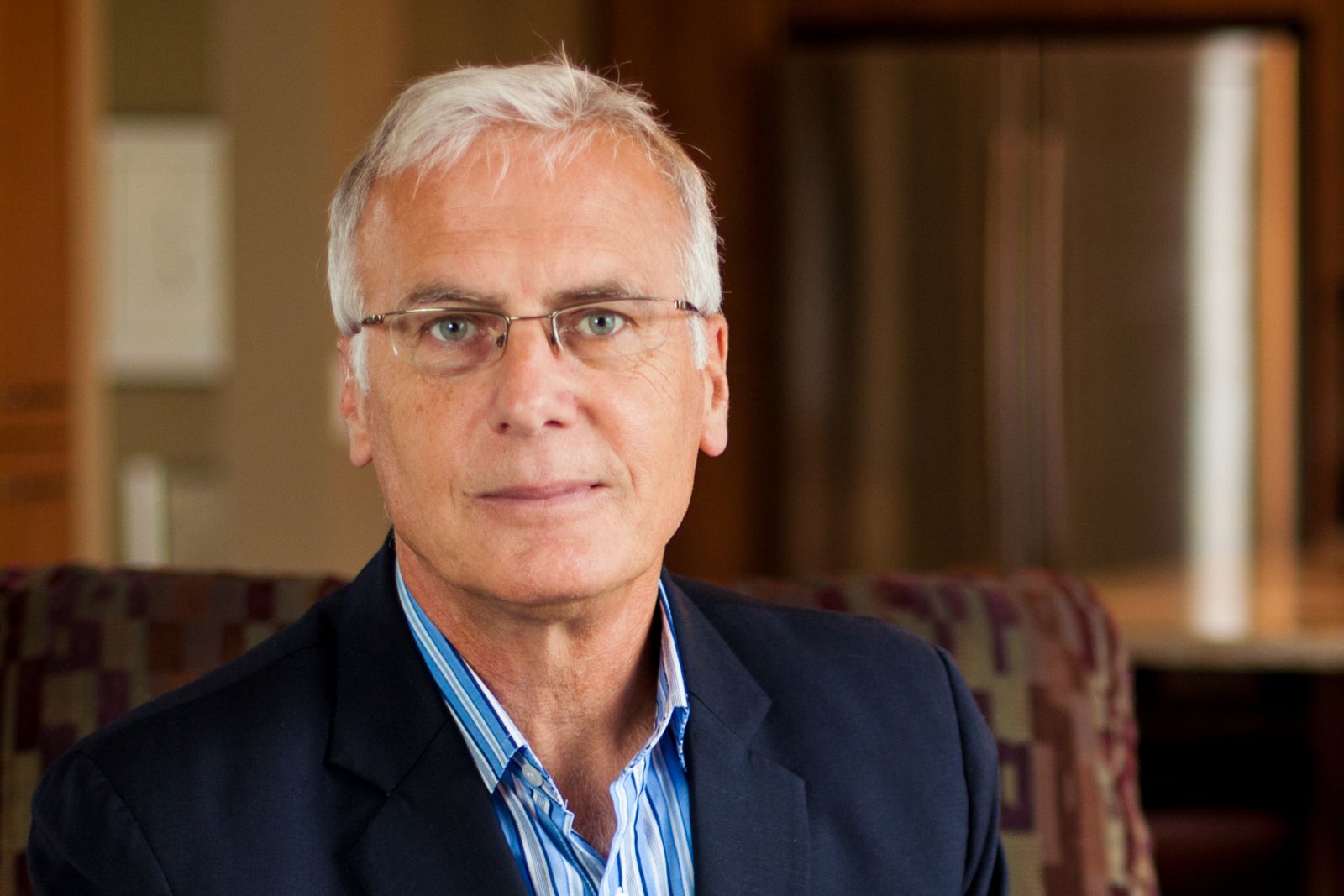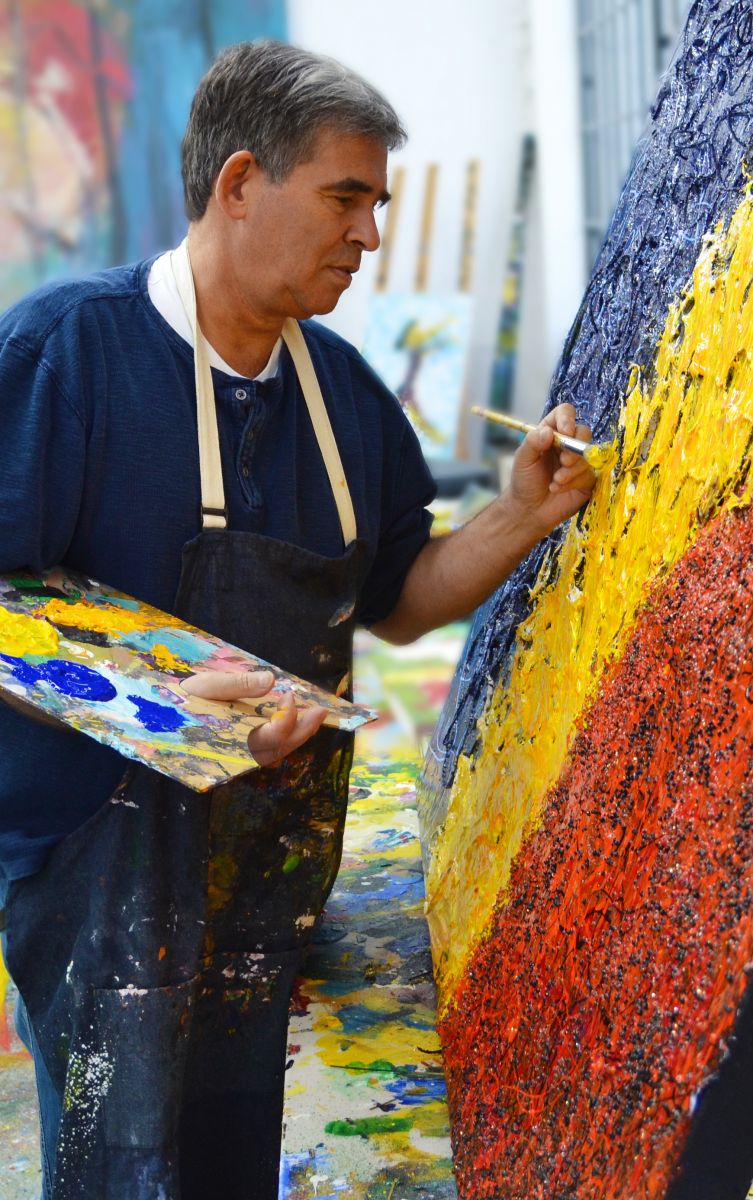Engagement Radio: Peter Hart and David Zinger on Leadership - Where Recognition, Engagement, and Art Converge - Interview transcript
Speaker 1: Welcome to Engagement Radio brought to you by the Enterprise Engagement Alliance and Engagement Strategies Media. This podcast program brings you ten minutes of hard-hitting and important information from leaders and experts to help you and your organization profit from engagement. Go to
enterpriseengagement.org for the latest news, trends, research and insights and follow us on
Twitter @eea_org. Now, let's welcome our host, Paul Hebert.

Paul Hebert: Today we have two great guests, Peter Hart and David Zinger, co-authors of the interestingly titled book,
People Artists: Drawing Out the Best in Others at Work. Their website for the book is
peopleartistry.com. Peter is the CEO of Rideau, a leading company in recognition and reward program space, and he also has a new project called Vistance, which is an advanced analytics product that firmly links recognition incentives to real true ROI. He’s a board member of the Incentive Federation, Recognition Professionals International and
Accueil Bonneau, a shelter for the homeless in Montreal.
Our second guest is
David Zinger. David is founder and host of the 5,000-plus member
LinkedIn Employee Engagement Network, and a prolific author whose titles include Assorted Zingers: Poems and Cartoons to Take a Bite Out of Work and Zengage: How to Get More Into Your Work to Get More Out of Your Work. He has co-created 10 exceptional free employee engagement e-books in conjunction with the Employee Engagement Network. David has also taught educational psychology and counselling psychology at the University of Manitoba.
With that, let’s get things going. What prompted you to collaborate on this book? Why did you guys get together and decide to do this? And more specifically, what is the connection between art, recognition and engagement?
Peter: It's a great question, Paul. I think that from my perspective, if I look at recognition and rewards, rewards are tangible items. They have a hard value, starting with cash all the way to debit cards, to gift cards, to actual merchandise. To me, a lot of people when they're in our industry think that when you give somebody a gold watch at 25 years that you recognize them. I think both David and I would say that's not necessarily true because recognition is an emotion. It's a feeling. You either feel it or you don't. Too often, the two are confused.
For me, the rewards are really hard numbers. Recognition is really an art. How you treat people, how you show up for work yourself and how you talk to people in the workplace really is an art. Some people have that and mastered it and some people have not. For me, there's a strong linkage between...As David mentioned, I am an artist. When I'm doing a painting, what I'm doing is I'm trying to make people feel better, make their environment feel better. As a business leader, that's what I'm trying to do in my workplace.
I think that recognition is very much an art, but behind it there is very much a science in the sense that if you treat people well, if you care about people, they're going to care about you. That's measurable. That actually is measurable in today's world.
Paul: David, anything to add to that?
 David:
David: Just to supplement. Peter's from Montreal and I think one of the greatest management thinkers in the globe, Henry Mintzberg, is also from Montreal and did a brilliant book called
Managing. He said good leaders manage and good managers lead, and that this is a science, a craft and an art. In some ways, what Peter and I have done have given shape and form to art, to let people know if you're a leader or a manager, and how to become the artist.
We don't want you to go in your office and pull out a box of crayons and draw stick figures. You can if you want, but it's really about the art of drawing out the best from people, taking that moment to notice, tying it to results, tying it to the results that they want. They are very much linked. I go around the globe working on engagement and I'm seeing most programs fail and what I see is the practices succeed. The behaviors and actions that individuals and individuals collectively practice are to me what makes the biggest difference in recognition and engagement.
If the program addresses that, then the program may be successful. If we leave recognition and engagement simply to a program or that it belongs in HR or internal communications, I think the failure rates are quite high.
The Art of Leadership
Paul: Interesting. I've heard a couple of times as we talked about leadership and management. Is it your contention that, and Peter I'll throw this to you, that this is more of a leadership book, this People Artistry and the series, is this about leadership or is it really just about management or is it really about recognition? Should leaders be interested in this?
Peter: Absolutely. As I said, how you treat people in the workplace has a direct link to your bottom line. From my perspective, both books are really very much geared towards leaders and what you need to do in the workplace to draw out the best in others. Again, I think that recognition is a learned behavior. We all know that. If you were recognized and appreciated by your parents when you were a kid, most likely you're going to be using it in the workplace. If you were not, it's something that you have to learn.
As leaders, I think it's vital that we learn this because there's going to be a talent crisis. There's going to be a global talent crisis coming in the future. It's not there today, but as more and more boomers exit the workplace, you're going to see the race for talent is going to tighten up. I think that you're going to really need to have leaders that can draw out the best in others.
Paul: David, anything you'd like to add on to that, what leaders should be looking at when they're looking at this book?
David: Sometimes we bemoan micromanagement. I love micromanagement as long as it's not taking things over from people, but it's noticing the moments. It's being connected. I think we should also be very concerned about macro leadership. Leadership is not by decree anymore or by policy or by simply crafting strategy. It occurs by interaction. It occurs by drawing out the best. Leaders don't get things done through people. They get things done with people. If you're going to work with people, you really need to show up and to pay attention and to not only do that, but to voice it.
The more you spend time simply looking at documents in your computer screen and you don't interact with the people, I think it has a lesser effect on your ability to influence people. We always say everyone's a leader and certainly that could be true, but the danger is with so much on our plates, we sometimes can forget that standing below the bottom line are all the people holding it up. If we don't draw out the best from them, that bottom line is going to collapse.
Everybody’s a Leader
 Paul
Paul:
I'm a big fan of that whole idea of everybody being a leader at some point. We try to these keep short so I've got one other question. It might be a bigger one. We've talked about how this is all about engagement and connecting art and recognition to engagement as an outcome. There seems to be a huge uptake, not just recently, over the last 8 or 10 years, but recently they're talking about having investors looking at engagement as a measurable thing when they try to decide the value of a company or even the creators of the ISO standards on quality management looking at engagement as a best practice field. What do you think about that? Do you think we're seeing even accelerated growth of engagement as opposed to maybe tailing off a little bit after about a good 10-year run? David, what do you think?
David: I think we're going in both directions at once, to be honest with you. I've seen some organizations abandon engagement because they didn't get their results. I see consultancies talking about words like beyond engagement or engagement is old and we need something new. At the same time, we're seeing many organizations just starting to come on board with engagement. When I look at engagement, we didn’t fail with engagement. think what we failed to do is to go fully into engagement. I frequently like to say there is no way to engagement. To engage is the way. People artistry is one of those ways and a very powerful way to transform the passive noun of engagement into the active verb of engage.
When I look at investors becoming interested in engagement, when you talk about ISO standards, I'm fairly pleased because it offers some structural encouragement and maybe even go further than that if it becomes an ISO standard to really zero in and engage. I just hope it doesn't become a paper exercise and becomes very much that human endeavor that makes a difference in the workplace.
From Buzzword to Reality
Paul: Peter, your thoughts?
Peter: I think there's two perspectives. I think that if we're looking at it from our industry's perspective, there's way too many companies that are saying that they're engagement companies and at the end of the day, all they're trying to do is use that as a lever to sell more rewards, number one. I think that from a practitioner point of view, I think that there is a heightened awareness about engagement and I think that that is going to continue. I think that's going to continue because of the talent crisis. For instance, here in Quebec where I live, more people retired from the workplace in 2013 then entered in. By 2030, the stats say that there's going to be a deficit of 11% workers to open jobs.
It's not just restricted to Canada but in many other countries. In Germany, it's over 20%. In Brazil, it's over 30%. All over the globe, there's going to be a talent crisis. Companies that have better engaged workforces are going to be the companies that succeed. I think that you're going to see more and more board level folks saying, "All right, so what are our human capital projects? What are we doing to attract, to retain and to engage folks?" If I look at people artistry, I'm really hoping that the next book that David and I do is the science behind people artistry because there is a science. Just as you have medicine, the art and science of medicine. There is an art and science behind what we're doing with people artistry.
Paul: I definitely agree with that. People are not machines who are trying to apply nothing but science. I think you get very obedient mercenaries. I think the art part is where we get the emotional connection personally. I'm just going to lay that down there as our last little bit of information. Guys, I really appreciate you taking the time today to talk about this. Just to remind our listeners, we talked about the book called People Artists: Drawing Out The Best In Others At Work.
I've been through it. I love it. It's a great book. The website for this book and the precursor book is at http://peopleartistry.com. I guess in 2016 we really don't even need to add http or www. It's just
peopleartistry.com. Peopleartistry, all one word. David, thank you so much. Peter, thanks so much for your time.

 David: Just to supplement. Peter's from Montreal and I think one of the greatest management thinkers in the globe, Henry Mintzberg, is also from Montreal and did a brilliant book called Managing. He said good leaders manage and good managers lead, and that this is a science, a craft and an art. In some ways, what Peter and I have done have given shape and form to art, to let people know if you're a leader or a manager, and how to become the artist.
David: Just to supplement. Peter's from Montreal and I think one of the greatest management thinkers in the globe, Henry Mintzberg, is also from Montreal and did a brilliant book called Managing. He said good leaders manage and good managers lead, and that this is a science, a craft and an art. In some ways, what Peter and I have done have given shape and form to art, to let people know if you're a leader or a manager, and how to become the artist. Paul: I'm a big fan of that whole idea of everybody being a leader at some point. We try to these keep short so I've got one other question. It might be a bigger one. We've talked about how this is all about engagement and connecting art and recognition to engagement as an outcome. There seems to be a huge uptake, not just recently, over the last 8 or 10 years, but recently they're talking about having investors looking at engagement as a measurable thing when they try to decide the value of a company or even the creators of the ISO standards on quality management looking at engagement as a best practice field. What do you think about that? Do you think we're seeing even accelerated growth of engagement as opposed to maybe tailing off a little bit after about a good 10-year run? David, what do you think?
Paul: I'm a big fan of that whole idea of everybody being a leader at some point. We try to these keep short so I've got one other question. It might be a bigger one. We've talked about how this is all about engagement and connecting art and recognition to engagement as an outcome. There seems to be a huge uptake, not just recently, over the last 8 or 10 years, but recently they're talking about having investors looking at engagement as a measurable thing when they try to decide the value of a company or even the creators of the ISO standards on quality management looking at engagement as a best practice field. What do you think about that? Do you think we're seeing even accelerated growth of engagement as opposed to maybe tailing off a little bit after about a good 10-year run? David, what do you think? ESM News Alert for the latest news. Subscribe here.
ESM News Alert for the latest news. Subscribe here.
